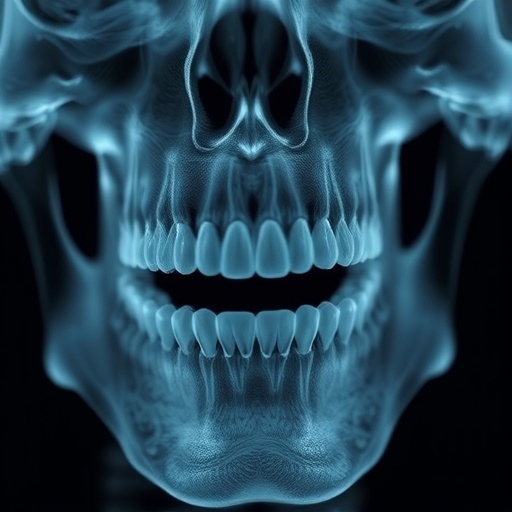Tooth loss may seem like an inconsequential problem at first glance, particularly in a society where dental aesthetics often take a back seat to physical health. However, new evidence suggests a more profound connection between oral health and overall longevity among older adults. Recent findings from the Chinese Longitudinal Healthy Longevity Survey (CLHLS) reveal that the progression of tooth loss can significantly impact mortality rates in this demographic, raising alarm bells among health professionals and researchers alike. The study conducted by Duan, Yang, and Ruan sheds light on this often-overlooked correlation, emphasizing the implications for public health strategies.
As we age, our bodies undergo various changes, some of which can severely impact dental health. Tooth loss is a common occurrence among older adults, often attributed to periodontal disease and other age-related factors. Yet, this study suggests that the implications of losing one’s teeth extend far beyond the dental chair. Researchers have shown that oral health may serve as a critical indicator of overall health, especially in geriatric populations. The direct relationship between tooth loss and increased mortality underscores the necessity to prioritize oral hygiene and accessibility to dental care as we age.
One of the more startling revelations from the CLHLS data was the stark statistic showing a direct link between the degree of tooth loss and an increase in mortality risk. According to the research findings, individuals who had lost a significant number of teeth were at a markedly higher risk of dying than their counterparts who maintained dental integrity. This correlation necessitates a closer examination of how oral health education and preventive care can be reinforced among older adults to improve not only their quality of life but also their longevity.
Contextually, the research was situated within the expanding body of studies examining the health outcomes associated with oral health. The researchers argue that neglecting dental health in older adults could lead to a cascading set of health problems, including but not limited to cardiovascular diseases, diabetes, and nutritional deficiencies. The biological rationale behind these connections often lies in the systemic inflammation that can arise from untreated periodontal disease, which, in a vicious cycle, can compromise other bodily functions.
Duan and colleagues utilized a longitudinal approach by employing data from the CLHLS, which collected health, lifestyle, and demographic information from thousands of participants over time. This long-term data provides a solid foundation to draw conclusions about how tooth loss impacts longevity. Unlike cross-sectional studies, which offer a snapshot view, longitudinal studies account for changes over time, allowing researchers to establish stronger causal links between tooth loss and mortality.
In light of these findings, public health measures must adapt to incorporate education about the importance of dental care alongside other facets of health. Programs aiming to improve the visibility and accessibility of dental hygiene resources for the elderly could ultimately lead to improved health outcomes across diverse populations. Additionally, integrating oral health into general healthcare services could create a more holistic approach to managing the well-being of older adults.
The societal implications extend further, as the consequences of poor oral health can ripple through familial and community structures. Older adults often depend on familial and community networks for support and care; the decline in health associated with tooth loss can burden these networks, both emotionally and economically. By addressing dental care proactively, we not only enhance individual wellbeing but also promote collective resilience within communities.
Another critical aspect that emerged from the study is the psychological ramifications of tooth loss. Losing teeth can lead to reduced self-esteem, increased social isolation, and even depression among older adults. This psychological dimension adds another layer to the already complex relationship between oral health and overall well-being. Hence, addressing dental health is about more than just physical attributes; it directly affects mental health and quality of life.
Looking forward, this research could inform future studies and encourage a more systematic inquiry into the various factors influencing health in aging populations. For instance, exploring the socioeconomic factors that correlate with dental health could reveal significant insights about health inequalities. Understanding how access to dental care varies across different regions in China—or globally—will enhance strategies for targeting vulnerable populations.
Moreover, the research accentuates the need for interdisciplinary studies that draw expertise from public health, gerontology, dentistry, and sociology. By fostering collaboration among various fields, we can achieve a more comprehensive understanding of how dental health intersects with broader health issues in aging populations. Such efforts are crucial in developing effective interventions tailored to the specific challenges faced by older adults.
In conclusion, the findings of Duan, Yang, and Ruan contribute significantly to our understanding of the interplay between tooth loss and mortality among older adults. By illuminating the health risks associated with poor oral hygiene, this research serves as a wake-up call for both health professionals and policymakers. Emphasizing prevention and early intervention in dental health can pave the way for longer, healthier lives among the elderly. As society grapples with an aging population, integrating dental care into overall health considerations will become increasingly essential for ensuring a better quality of life for all.
In the end, prioritizing oral health as a predicate for overall health, especially in aging populations, is not only a medical necessity but also a humanitarian effort. Taking steps toward improving dental care accessibility and education for older adults could ultimately lead to a healthier, more vibrant society. The evidence presented in this study serves as a compelling motivation to act, highlighting that oral health is indeed a cornerstone of longevity and well-being, and should receive the attention it deserves in both public health discussions and practice.
Subject of Research: The correlation between tooth loss progression and mortality among older adults.
Article Title: Tooth loss progression and mortality among older adults: results from the Chinese longitudinal healthy longevity survey (CLHLS).
Article References:
Duan, L., Yang, L., Ruan, H. et al. Tooth loss progression and mortality among older adults: results from the Chinese longitudinal healthy longevity survey (CLHLS).
BMC Geriatr 25, 769 (2025). https://doi.org/10.1186/s12877-025-06419-1
Image Credits: AI Generated
DOI: 10.1186/s12877-025-06419-1
Keywords: tooth loss, mortality, older adults, oral health, longevity, public health
Tags: accessibility to dental care for elderlyage-related dental issuesChinese Longitudinal Healthy Longevity Survey findingsenhancing oral health strategies for seniorsimpact of dental health on overall healthimplications of tooth loss on public healthoral health and longevity in older adultsoral hygiene importance for geriatric populationsperiodontal disease and agingpublic health implications of tooth lossrelationship between tooth loss and health outcomestooth loss and mortality in seniors





